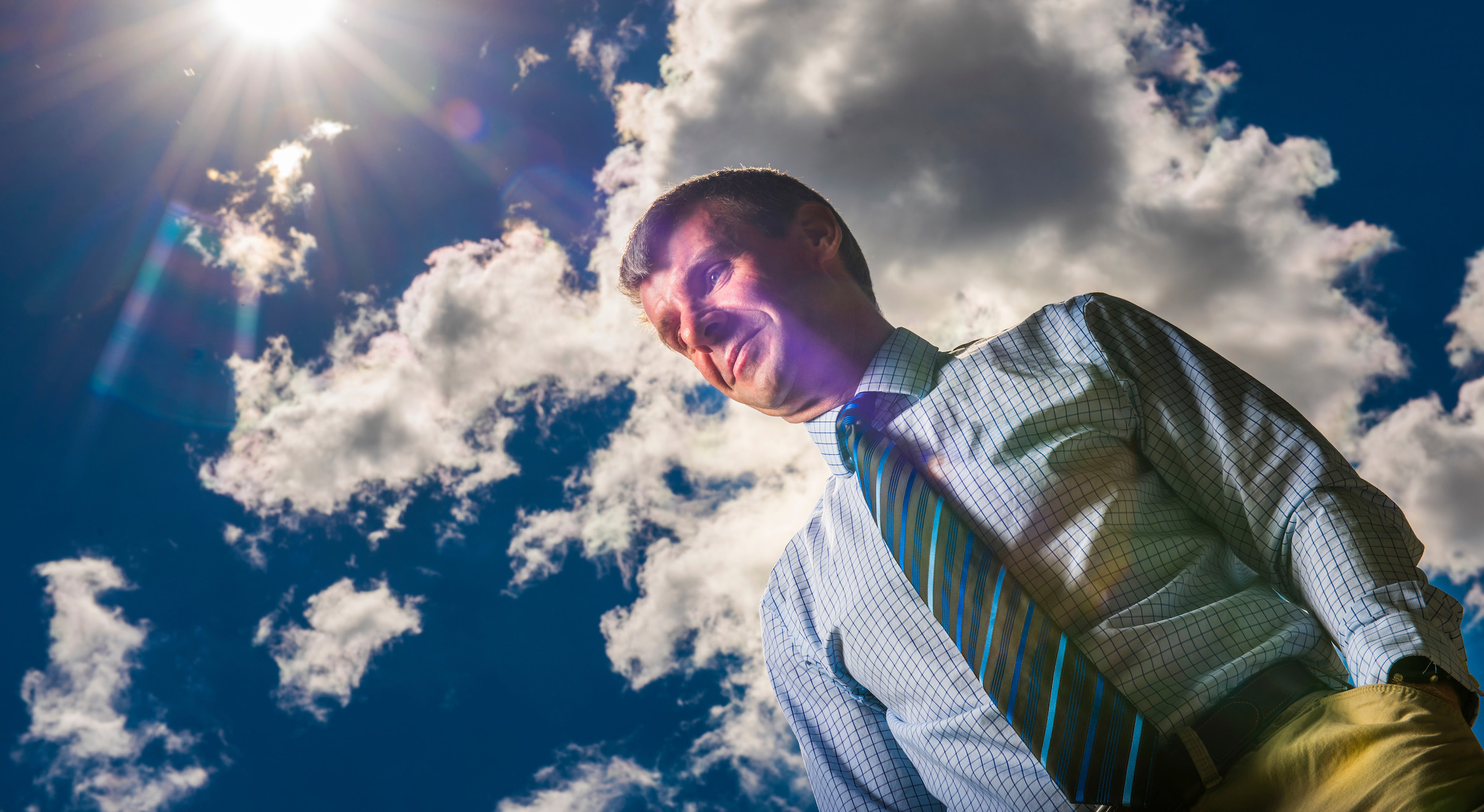
With his students and colleagues, physicist Ian Mann is working to better understand space weather and solar storms to minimize their impact on Earth. A beautiful consequence of the out of this world turmoil? The iconic Northern Lights, a point of pride for Canadians.
Iconic and inspirational, the Northern Lights are a point of pride for Canadians. Whether to gaze at the more common green or search for the more elusive blue and red, we have long looked to Aurora Borealis in awe.
Ever wondered what causes this natural wonder?
"Space weather creates this fantastic phenomenon that also poses a serious threat to our society." -Ian Mann
Distressingly, the consequences of what causes the Northern Lights could be less than wonderful, something which can wreak havoc for the technology, which is now ever present in our 21st-century lives.
Space weather is the more sinister side of this natural beauty, says scientist Ian Mann, professor of physics at the University of Alberta.
Colourful chaos
"People think the Northern Lights are this beautiful ethereal thing that they can relate to on a human or spiritual level, but at the same time, they may not realize that the space weather that creates this fantastic phenomenon also poses a serious threat to our society," says Mann, noting the Northern Lights are ultimately caused by disturbances coming from our sun 93-million miles away.
"Space is a shared resource. Countries rely on space assets for civil protection, communications, backbone of financial infrastructure, monitoring against natural disasters and also for security and sovereignty. A serious space storm could disrupt power grids on Earth, causing damage in the trillions and taking years to recover. We need to understand how space storms work, the impacts and the threats, and then be able to mitigate against them."
Mann, his students and colleagues are working to better understand space weather to minimize its impact on Earth. They generate scientific data through various ground monitoring stations in partnership with major international space agency satellite missions, as well as via ExAlta-1, the AlbertaSat cube satellite built by U of A students that is currently orbiting Earth's magnetosphere.
"We need to understand how space storms work, the impacts and the threats, and then be able to mitigate against them.." -Ian Mann
Helping to translate this knowledge and leadership globally, Mann is also the chairman of the United Nations Expert Group on space weather, working for and reporting to the United Nations committee on the peaceful uses of outer space.
Remote sensing space weather
"We are looking at the phenomenon and the impact of the phenomenon in terms of the characteristics of the Northern Lights that are being caused by space weather, and using our unique location here in Canada to remote sense the characteristics of space storms. We have the most accessible land mass underneath the auroral zone anywhere on the planet, so it almost behooves us as Canadians to exploit our geographic advantage to pursue space research in our backyard."
An English import who moved to Canada nearly 15 years ago, Mann says he fell in love with the country's landscapes and natural beauty like the Northern Lights. His scientific understanding of the processes behind the phenomenon doesn't stop him from looking to the sky in wonder.
Skywatching
The happy byproduct of all of Mann's instrumentation designed to capture scientific data to monitor space weather? Aurora Watch, an early-warning system with real-time emails and tweets that alert skygazers to when the Northern Lights might make an appearance.
"Like lots of people, I myself love to see the Aurora, and I'd love to know when they're going on. We designed and deployed instruments to run with real-time data feeds. It was relatively easy for researchers on our team to convert this into a service that sends out warnings when the magnetic field is more disturbed indicating a space storm is in progress and that the Northern Lights might be more easily visible."
Hear more about from Ian Mann about UAlberta excellence in space research on October 1 during an Afternoon with Chris Hadfield in celebration of World Space Week.